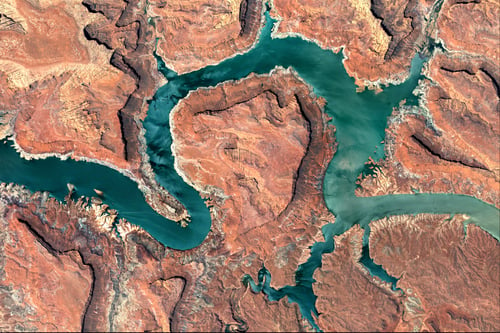It's coming to the end of summer here in Vail, and as life goes in the mountains, winter already feels like it's on the horizon. This last winter saw parts of Colorado reaching record-breaking snowfall, leading to gushing streams and dazzling wildflower blooms all summer long. It’s truly been an incredible year for water. So incredible that we might be forgiven for forgetting this isn’t always the reality for us in Colorado. Over time, Colorado and the whole Southwestern U.S. has actually been getting drier.
You might have heard the term “megadrought”, and if you haven’t, it likely adds to a long list of climate-related words that can seem daunting and all together too large. Plainly, “megadrought” just means an extreme drought. Recent research by hydroclimatologist Williams et al. used tree-ring records and hydrological modeling to demonstrate how global warming has pushed the drought we’ve been experiencing in the Southwest into megadrought territory. In 2022, it was officially labeled as an “emerging megadrought”. The years between 2000 and 2021 form the driest 22 year period since 800 CE. When a drought happens for a long period of time it leads to something called “aridification.” Another large word which simply means a place is getting drier over a long period of time. Unlike a drought, which is seasonal, aridification is here to stay. Unfortunately, it is here to stay in Colorado and the entire Southwest.

Aerial View from above the Colorado River, Lake Powell and Trachyte Canyon.
Beginning as a mountain stream, the Colorado River is fed by several tributaries, growing as it feeds 7 different states and 30 Indigenous American tribes. This forms the Colorado River Basin which supports 40 million people, the West’s agriculture and its natural systems. The Basin also supplies water to Mexico but the shrinking Colorado River hasn’t reached the sea in over 50 years. Climate change combined with fast-growing populations are causing the Colorado River Basin to dry up. Places like the Eagle Valley are getting hit the hardest.
Over 70% of the water in the Colorado river comes from melting snowpack in the Rocky Mountains of Colorado and Wyoming. In a warming climate, precipitation largely falls as rain instead of snow leading to less snowpack that melts off at a faster rate. This, combined with warmer, “thirstier” air, dries out soils, decreasing overall stream flow and ultimately, the availability of water.
I am originally from Cape Town, South Africa, where in 2018, we almost became the first modern major city to run out of water. Living through this makes you really appreciate water. We use it for virtually everything: growing our food, washing our dishes, quenching our thirst and that of all the animals and plants around us. Without it, no living organism would exist. This isn't something we tend to think about on a day-to-day basis. But, when lining up to collect water rations becomes an imminent reality, you start to think about it, a lot. It shifted my perspective. What happened in Cape Town was not some anomaly, but rather is the reality of the world we live in now. We need to start shifting perspectives over here too.
On a state level, things have started to change. In recent discussions, the seven western states reached a major agreement to reduce their water intake by at least 3 million-acre-feet of water by 2026. This is major for the sustainability of the Colorado River Basin, but we must start shifting our everyday as well. Take a moment to feel thankful for what these water bodies provide for us everyday and then, remember to give them the protection and respect they deserve.
Bella Whiting is a naturalist at Walking Mountains Science Center. Having grown up along the Atlantic Ocean, you can typically find her immersed in some sort of cold water, floating on her back and convincing others to take a dip alongside her.







